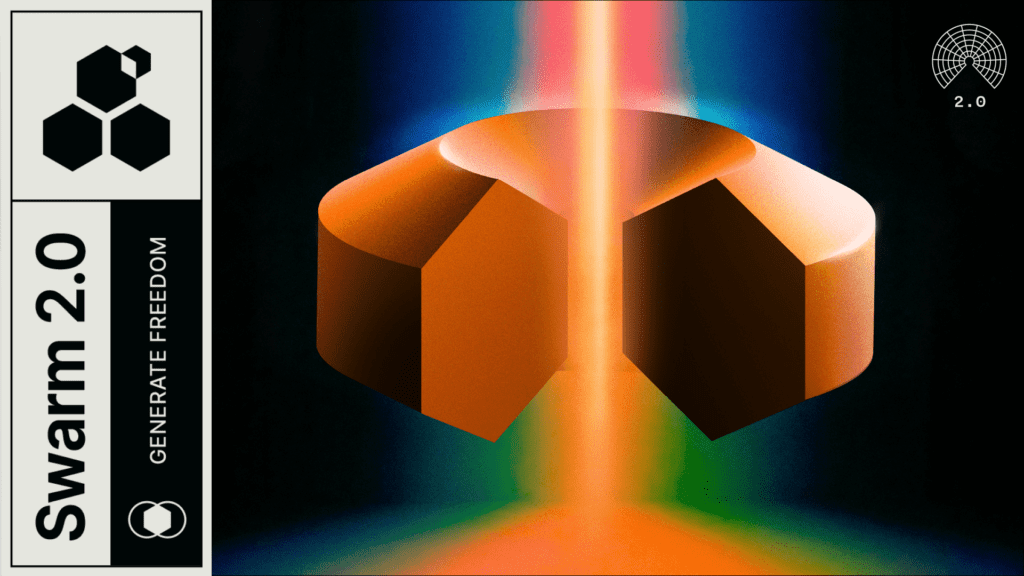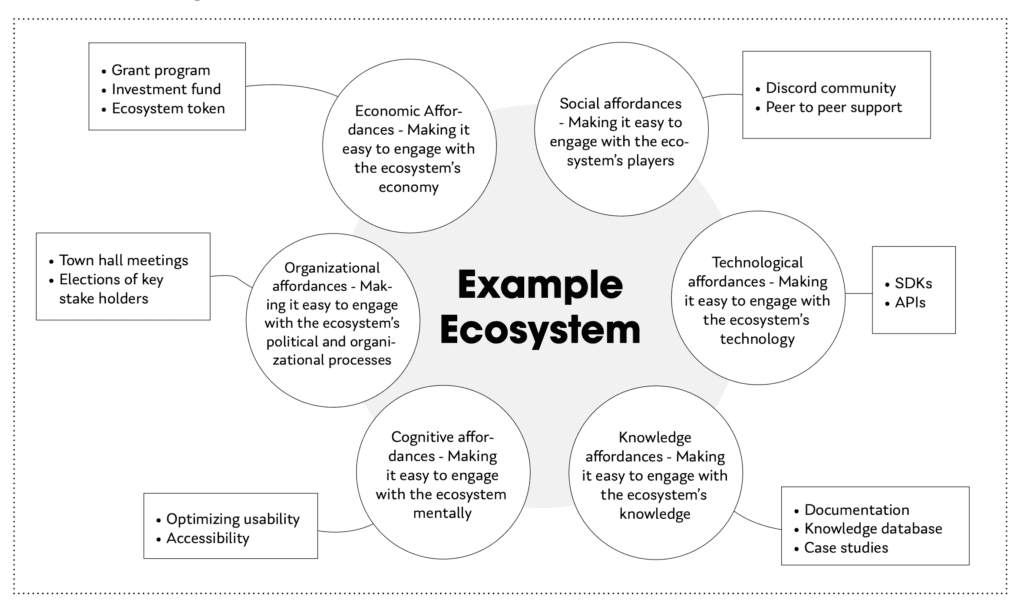- The client is a foundation that operates a decentralized, encrypted data storage and distribution network.
- Swarm’s leadership asked for help in developing a strategy for their growing ecosystem.
- theLivingCore conducted research, interviewed experts, and facilitated workshops.
- The result was a comprehensive toolkit for developing an ecosystem’s strategy called The Hivemaker’s Code. In addition to a step-by-step guide, it includes a series of foundational articles on the potential of blockchain and decentralized technologies for society.
- Swarm developed its own strategy using the toolkit, and made it freely available for the benefit of different organizations within the community and the public.
At the beginning of 2024, there were nearly thirteen thousand cryptocurrencies. Investors and speculators have poured more than two trillion dollars into the system, two-thirds of it into Bitcoin and Ethereum alone.
Fifteen years after the initial release of Bitcoin, however, most people only know about the money-making potential of blockchain networks. And those entering the field for financial gain have even been given their own nickname – “degens” (as in “degenerate”, though many of them wear it with pride).
Countering this trend is a group of people who call themselves “regens” (as in “regenerate”), who believe that this technology can be a force for good. They claim it can help solve many of humanity’s problems and improve the way society works, while protecting the planet. They are building and investing in purpose-driven networks.
Created by an international team and managed by a Swiss foundation, Swarm is one of those purpose-driven, regenerative projects.
The Earth’s Crypto Hard Drive
While some crypto networks focus on enabling financial transactions (like Bitcoin) or creating infrastructure for virtual worlds (like Decentraland), Swarm focuses on data. It aims to become the “Earth’s hard drive”.
Technically speaking, Swarm is a decentralized data storage and distribution technology. It’s a network of nodes that anyone can operate, offer their free disk space to the network, and be rewarded with the BZZ token. They can then exchange this token for other currencies like Ethereum to use it for payment, for example.
The system then takes the files that people and organizations upload to it, chops them up, encrypts them, and distributes them to the nodes on the network. When needed, it then retrieves the files, reassembles them, decrypts them, and makes them available for use. It can host websites, applications, files that people send to each other, or ones that an organization’s employees use at work.

It’s basically cloud storage, much like Amazon or Google, except it’s distributed around the world, censorship-resistant, and highly resilient. And most importantly, it can’t be controlled by any single organization or government, unlike the clouds run by corporations.
In June 2021, after several years of development, Swarm officially launched its network. While it continues to improve the system and add new features, it would also need to build a strong ecosystem of stakeholders who will use and promote the network.
That’s why Gregor Žavcer, director of the Swarm Foundation, approached theLivingCore soon after with a question: “What should be the strategy for building our ecosystem?”
Purpose-Oriented, Value-Aligned Digital Ecosystem
For a decentralized, digital project like Swarm, a quality ecosystem is critical to its success. In Gregor’s words, it’s like a coral reef that starts in the right environment and attracts new participants to join, leading to growth and innovation. And the Swarm ecosystem needs to connect different types of participants:
- Developers and maintainers of the Swarm infrastructure
- Node operators who contribute their storage capacity
- Application developers who build their applications on top of the network
- Organizations and individuals storing their data on the network
- Fans of blockchain projects
But there’s another reason. Decentralized and encrypted networks that store data often have no control over what people use them for. Those who run them don’t have access to their content. This is both a blessing and a curse. Especially for purpose-driven projects that would prefer to see their systems used for good.
If control is not an option, then the only other way is to incentivize and support good use. And that is a role that a purpose-driven ecosystem and its community can play.
Swarm has already built several elements of its ecosystem to play this role. There’s the Fair Data Society, which provides both technical and ethical resources to the community. There’s the Swarm Fund, which invests in selected projects that harness the power of the network. And there are grants and fellowships that support other such projects.
The Hivemaker’s Code: An Ecosystem-Builder’s Toolkit
So how do you create a strategy for a distributed, digital ecosystem that ensures its participants are aligned around the same values? A good strategy must not only present a coherent vision of the future, but also ensure that the design of the system helps avoid the most common pitfalls.
We know that many of these pitfalls stem from a lack of clarity about things like:
- What is the purpose and goals of the ecosystem?
- Who are the people in the ecosystem and what are their needs?
- What roles people can play and what is the value they can bring to one another?
- How will the ecosystem be governed?
- What are the right technologies to make the ecosystem work?
- What are the ways to jump-start the network effect of the ecosystem?
As we researched these topics and discussed them with Swarm’s leadership, we realized that the knowledge and methods we can use to build Swarm’s ecosystem strategy could be immensely useful to anyone building a digital ecosystem. Based on this, we decided to create a publicly available toolkit that anyone could use. And we called it The Hivemaker’s Code.

In The Hivemaker’s Code, ecosystem builders will find a step-by-step process that will guide them through creating a strategy for their ecosystem. It’s a thorough tool that starts with the purpose of your ecosystem and then drills down to a more detailed level of execution. It helps you think, predict, and focus your efforts on what is important for your ecosystem’s success.
Inside, you will find two parts:
- A nine-step guide to building a decentralized digital ecosystem strategy. It guides you through a series of questions and exercises to structure your thinking, providing a visual template for your strategy.
- A comprehensive collection of foundational articles for ecosystem builders that dive deep into the topics of ecosystems, collaboration, trust, decentralization, neutrality, and open society.
You can download the toolkit and read the foundational articles for free here.
And if are building an ecosystem, either on your own or in your organization, but need someone to talk to, we are happy to help you engage in the process and build a value-aligned, purpose-driven network. Just book an introductory call with us using the form below and tell us more about your project.


